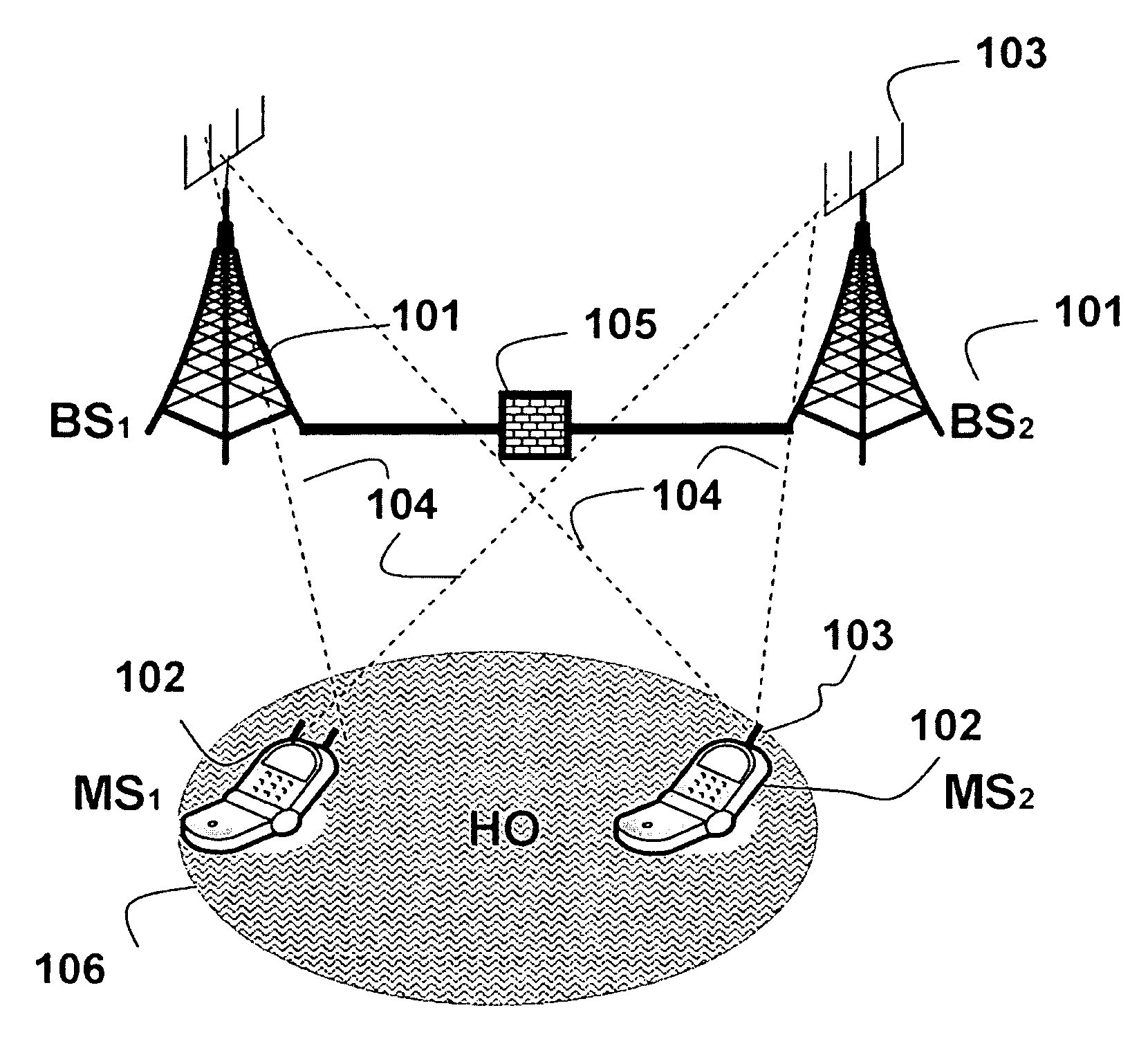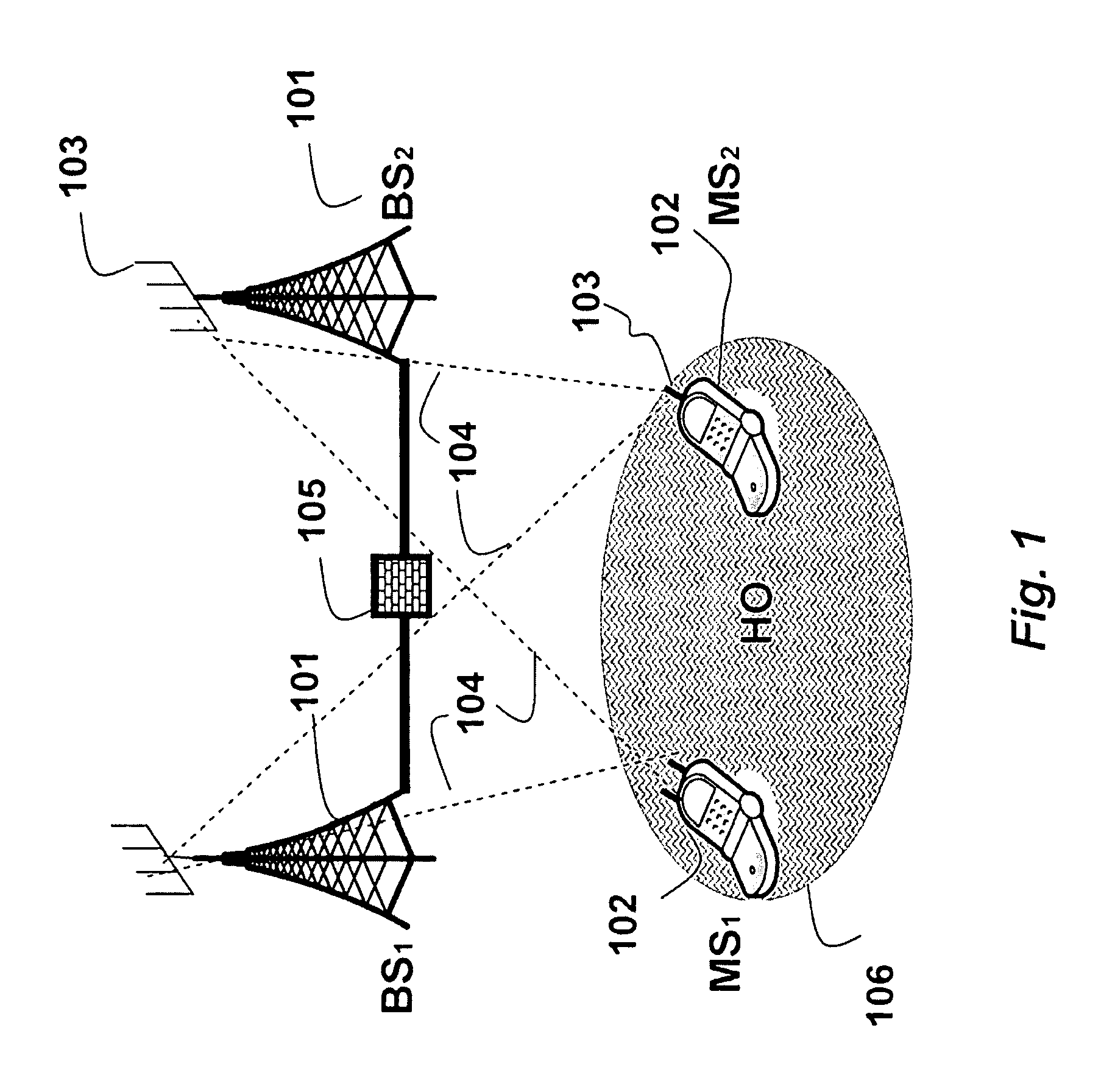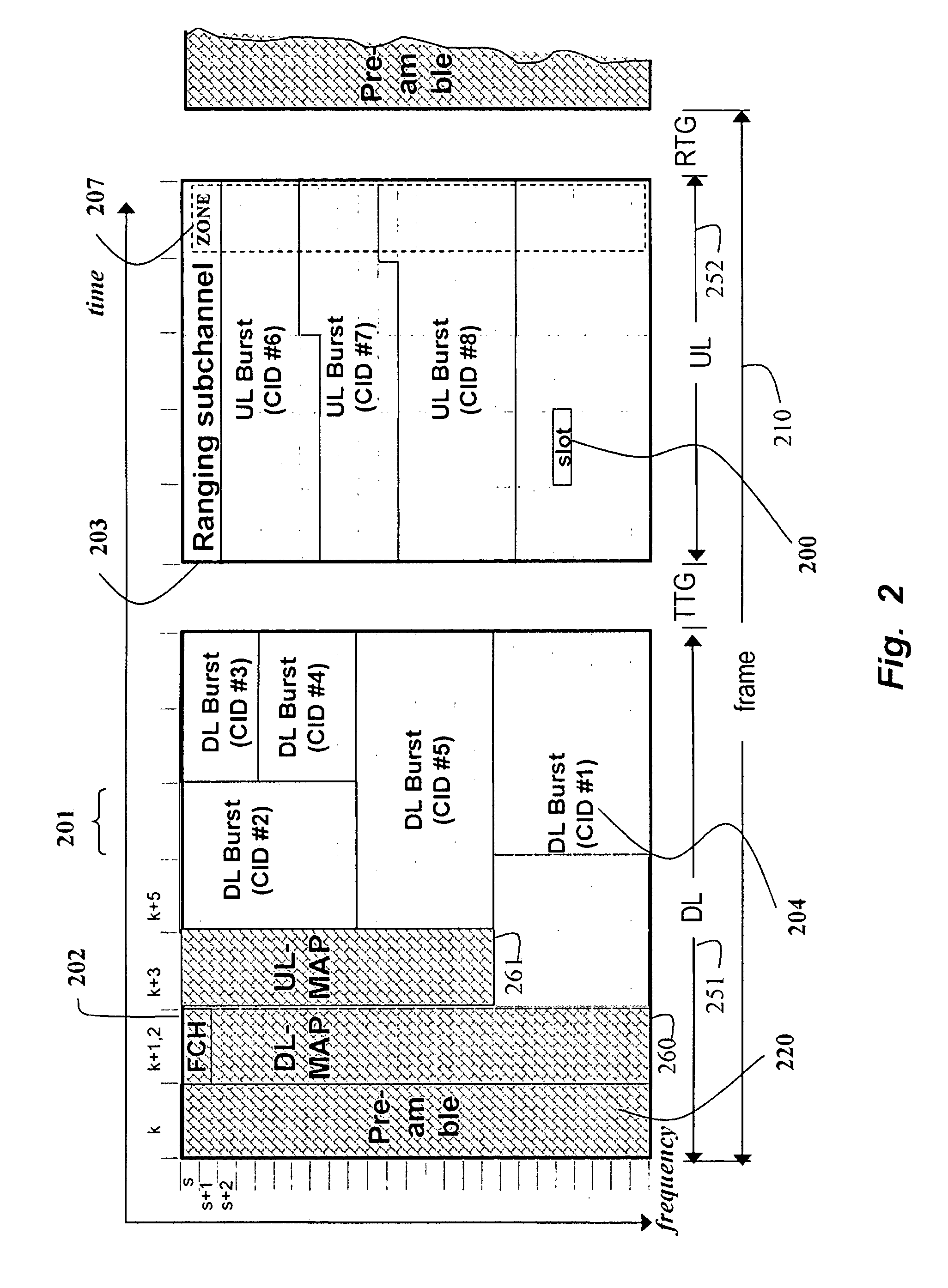Cooperative Communication in Wireless Cellular Networks
a wireless cellular network and cooperative communication technology, applied in the field of wireless networks, can solve the problems of inter-cell interference (ici), ici is a major limitation of the spectral efficiency of wireless cellular networks, and remains a key issu
- Summary
- Abstract
- Description
- Claims
- Application Information
AI Technical Summary
Benefits of technology
Problems solved by technology
Method used
Image
Examples
Embodiment Construction
[0023]Wireless Cellular Network
[0024]FIG. 1 shows a wireless cellular network according to an embodiment of our invention. The network includes a set (two or more) of base stations (BSs) 101, and a set (two or more) of mobile stations (MSs) 102. Each station includes a transceiver. The transceivers are connected to a set of antennas 103. The dashed lines 104 indicate channels (links) between the transceivers.
[0025]A backbone or infrastructure 105 connects the BSs. Typically, the infrastructure includes wired and wireless connections, and processors that perform the high-level network functions as described herein. Base stations usually communicate with each other via the backbone 105 to exchange control information, channel information and even data traffic, which makes it possible for base stations to perform joint encoding and decoding.
[0026]The range of the signals from a base station defines a cell. Where signals from base stations overlap is known as a handover (HO) region 106....
PUM
 Login to View More
Login to View More Abstract
Description
Claims
Application Information
 Login to View More
Login to View More - R&D
- Intellectual Property
- Life Sciences
- Materials
- Tech Scout
- Unparalleled Data Quality
- Higher Quality Content
- 60% Fewer Hallucinations
Browse by: Latest US Patents, China's latest patents, Technical Efficacy Thesaurus, Application Domain, Technology Topic, Popular Technical Reports.
© 2025 PatSnap. All rights reserved.Legal|Privacy policy|Modern Slavery Act Transparency Statement|Sitemap|About US| Contact US: help@patsnap.com



